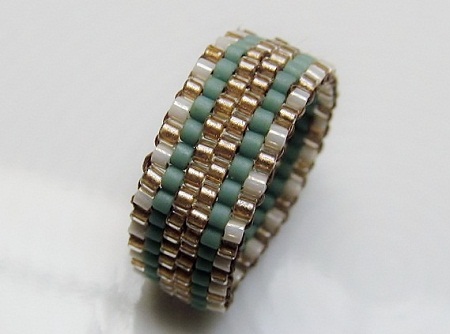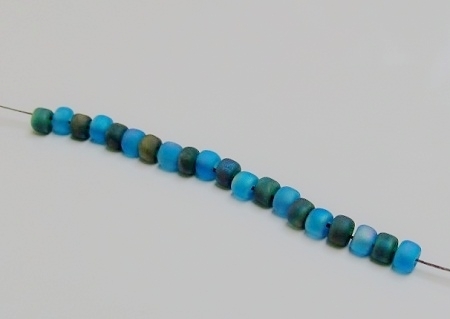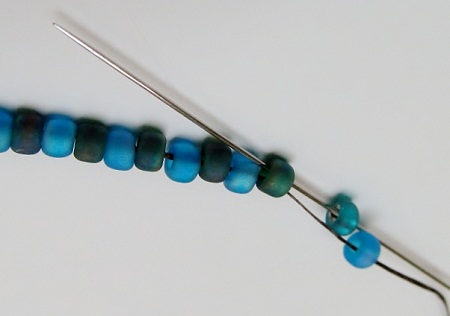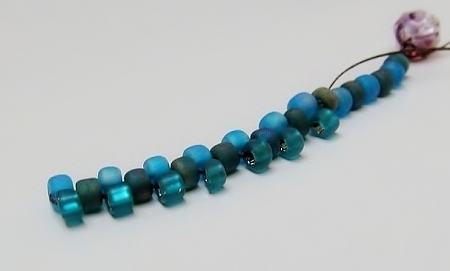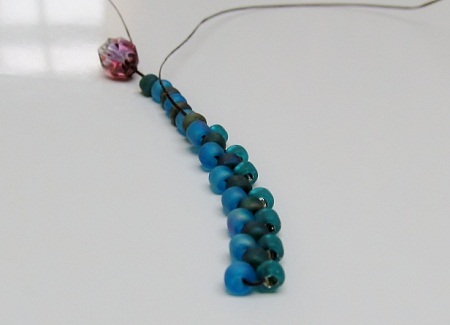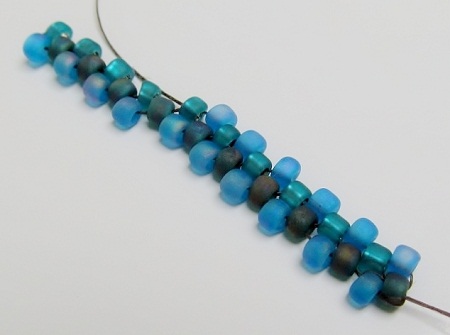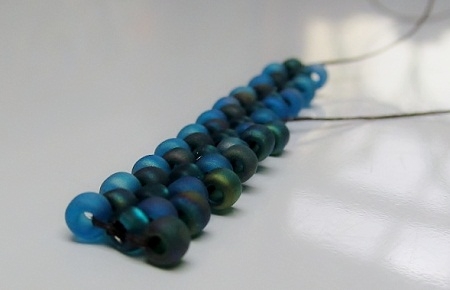For those who love puzzling and sewing there is the flat peyote stitch that results in a smooth band built up from the width. It is done with small Japanese tubular beads which have a different name depending on the brand. By Miyuki they are called Delica, by Toho Treasures and Aiko, but both refer to a similar product.
Note: The peyote stitch gives the same result as the brick stitch, but differs in structure.
The simplest application - the even-count flat peyote band:
For this you use an even number of beads which will nest in each other as the teeth of a zipper. This means that from a visually point of view, just as a puzzle piece, a portion of the bead always belongs to the next row.
In addition to the flat peyote with an even number of beads, there exits both the possibility to work with an odd number of beads, by which one forms a diagonal line, as the possibility to work circular in order to create a cord. Moreover, there is a rapid method in which one adds two beads at the same time.
Difficulty:
Puzzling or following a regular pattern is not always easy and errors stand out. Therefore, it is highly recommended making a test piece and begin with a simple pattern. You could also make a sample in Japanese seed beads 8/0 in order to get used to the thread path.
Supplies for a sample:
- Delica 11/0 or seed beads 8/0 in three colors
- here the sample is made of: 8/0 seed beads in color a (turquoise blue frosted AB), color b (peacock emerald green frosted AB) and color c (silver-lined frosted turquoise green)
- calculation of the quantity of beads: bandwidth divided by bead width times two
- for example, if you want a width of 3 cm (30 mm) in 8/0 seed beads (3 mm) then you do the following calculation - 30 mm : 3 mm x 2 = 20 beads
- why this multiplication: the number of beads you set-up corresponds to the total of the first and second row
- s-lon thread D or Aa
- James John needles no. 12 for size 11/0 beads or no. 10 for 8/0 beads
- scissors and a beading surface
Weaving instructions for a sample in even-count flat peyote:
- take a comfortable length of thread
- leave a long tail end, about 15 cm
- add a stopper bead (in a different color) and fix it by passing twice through the bead
- add on a seed bead and go through it twice in order to fix the first bead
- pick up an even number of beads in alternating colors a and b
- keep the tension in your thread by sliding the thread behind your ring finger
- you do not start weaving until the third row, to begin you pick up a bead in color c and go through the second bead (color b) from the end, allowing the beads in color a to drop next to each other
- in other words, this shifts the first row and drops it a half-height downwards
SEE - part 2




